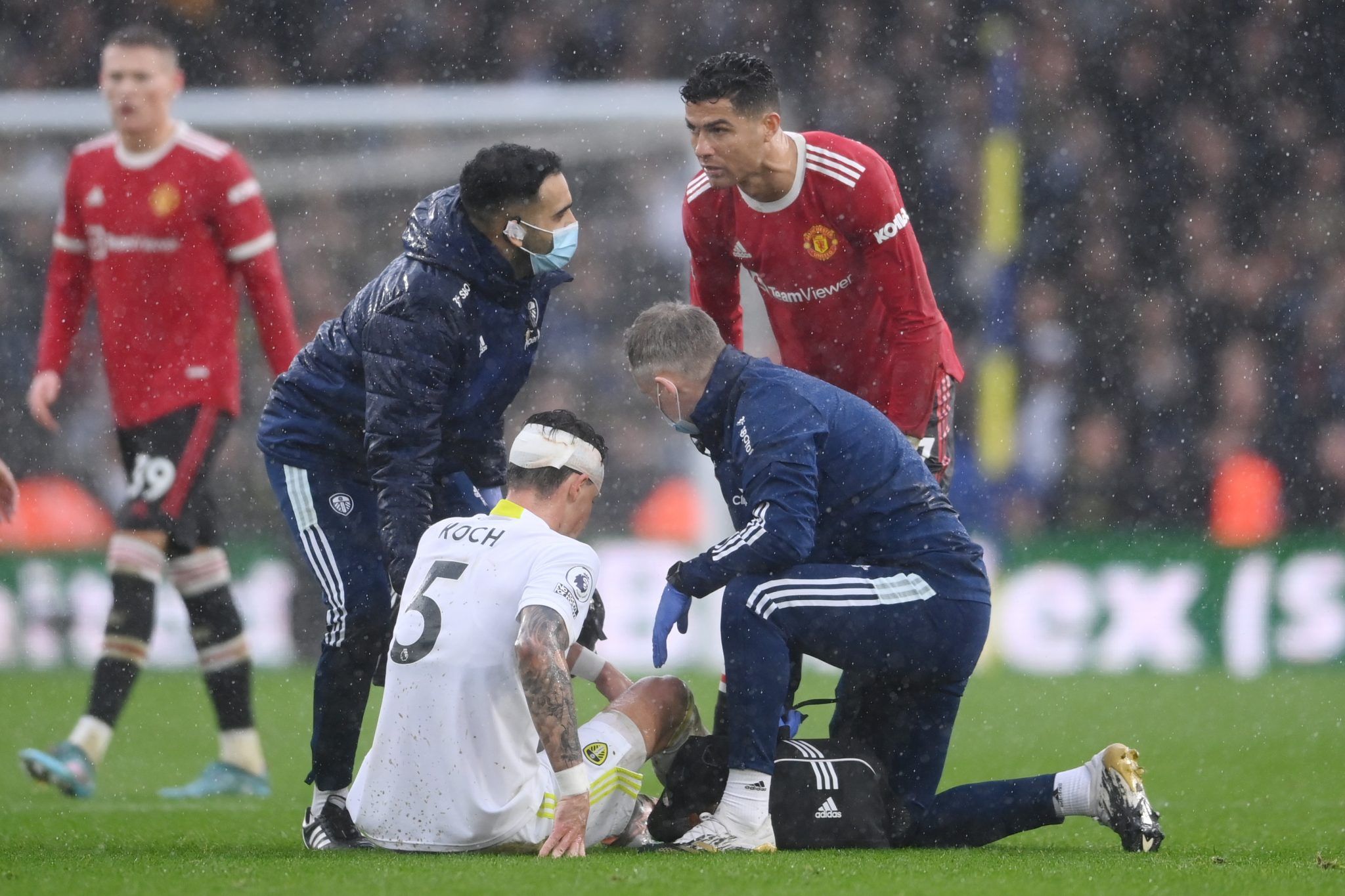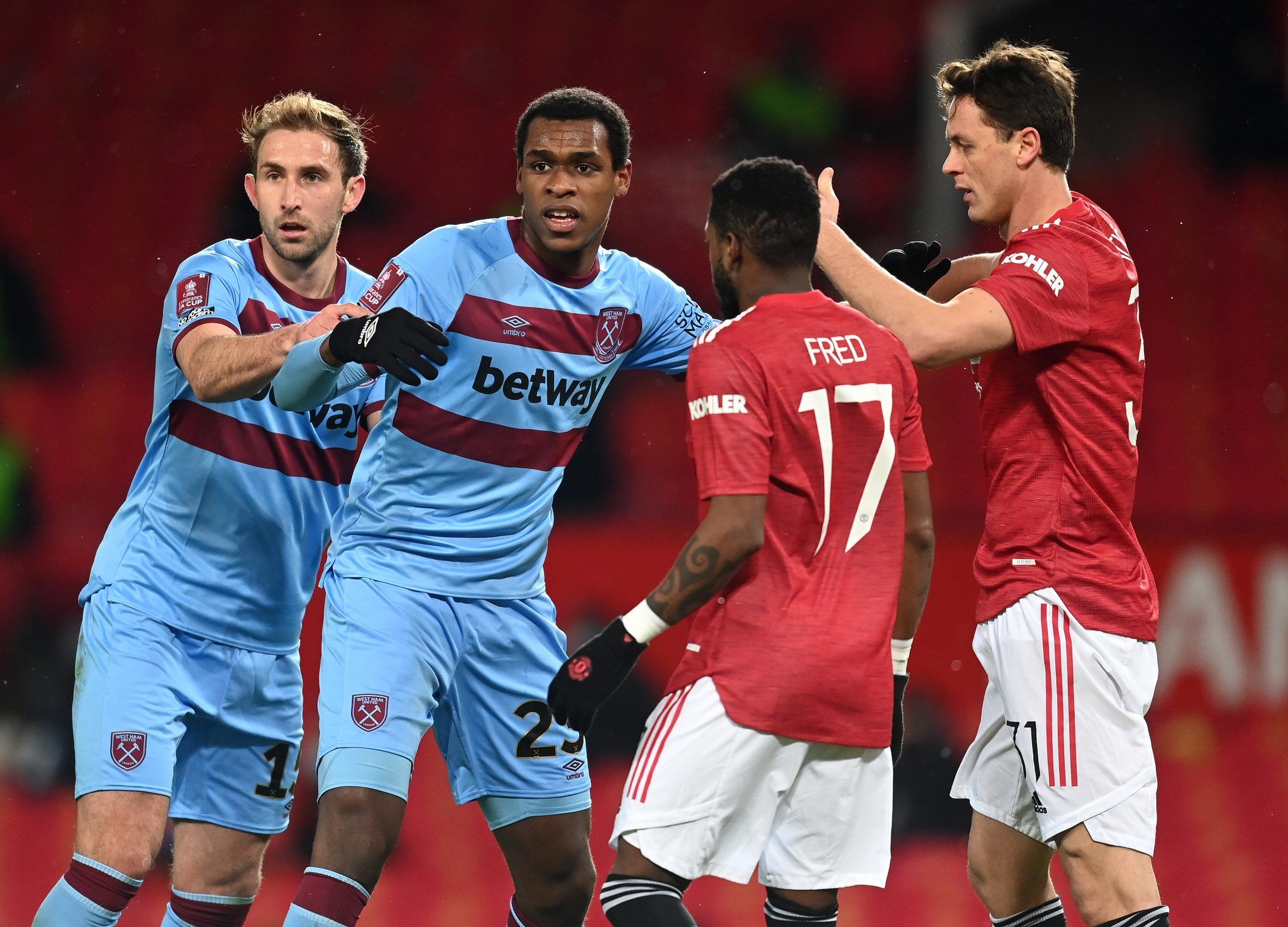Football’s dangerous ignorance towards head injuries still lingers
The first half at Elland Road on Sunday afternoon offered another of those occasions where you find yourself wondering when – if ever – football will learn its lesson.
The sight of Robin Koch – bandage stretched tightly around head, blood-soaked shirt replaced with a pristine white one – readying himself to come back on to the field was depressingly predictable.
Not even five minutes before that, he had collided with Scott McTominay with enough force to open up a gash just above his eyebrow. The blood had been flowing before he had even reached the turf.
Referee Paul Tierney responded immediately, halting the game. Leeds’ medical staff were by the player’s side within seconds, tending to the wound and rattling through all the obligatory checks. And then, just a short while later, there was Koch, patched up and deemed well enough to re-enter the game – albeit only for another 10 minutes.
 Leeds United’s Robin Koch is tended to by club medics, at Elland Road. (Credit: Getty Images)
Leeds United’s Robin Koch is tended to by club medics, at Elland Road. (Credit: Getty Images)Football finally attempting to follow examples of other sports
Football has lagged behind many other sports when it comes to taking head injuries seriously. This incident serves as a reminder of the dangerous ignorance that still lingers. The problem, however, is that such reminders occur with worrying regularity.
While this time it’s Koch, last month it was Sadio Mane, losing consciousness after being clattered by a Cape Verde goalkeeper while playing for Senegal. Weeks earlier, it was Newcastle’s Isaac Hayden, who Eddie Howe admitted was “dazed for four or five minutes” after colliding with a teammate in a game against Liverpool.
At last summer’s Euros, it was Benjamin Pavard, who revealed he had been knocked out for a few seconds after a heavy challenge in France’s group game with Germany. All three players received treatment; all three remained on the field for at least 10 minutes more.
Though shamefully slow in stirring themselves into action, to say football’s authorities have stood completely still on the matter would be unfair. After a trial by the International Football Association Board (IFAB), the Premier League were amongst those to adopt concussion substitutes, which permit a player to be withdrawn if deemed to be suffering with concussion. Undoubtedly, this is a sign that football is finally attempting to drag itself closer to the examples set by other sports. It is, however, difficult to argue that it is anywhere near enough.
IFAB stated ahead of the trial that, theoretically, at least, permanent concussion substitutes will reduce the pressure on medical personnel to make quick assessments as to whether a player is fit enough to continue. On the surface, it sounds very sensible; in reality, it’s incredibly naive and changes very little.
Club medical staff, as we saw at Elland Road on Sunday, are still being asked to make the same decision: whether or not a player should be removed from the game. Very little of the pressure that comes with making that call – be it from the player, coaching staff or lack of time they have to make it – is removed. Should a player not be taken off, they risk exacerbating a potential injury. It’s a glaringly obvious flaw which was exposed when West Ham’s Issa Diop became the first ever player to be substituted under the rule last year.
Benefits of temporary concussion substitutions has been stressed
This point has long been at the heart of the arguments put forward by Headway, the brain injury charity. Headway have campaigned for the introduction of concussion subs in football for years. Crucially, however, they have stressed the need for this to be done a temporary basis, allowing a player to be replaced until a thorough assessment has decided if they are fit enough to return to a game.
“The key questions are how will players be assessed for suspected concussion, and how will decisions be made about whether they should be permanently removed?” Headway’s Chief Executive, Peter McCabe, told us last year.
“The benefit of a temporary concussion substitution is that it allows for the player to be assessed off the pitch, in a quiet, appropriate treatment room away from the heat of battle and the glare of players, officials, coaches and fans.
“We know how difficult it can be for club medics to make concussion assessments on or at the side of the pitch, particularly in such a short space of time or when there are language barriers.
“If these decisions continue to be made in the same way, it is very hard to see how player welfare will be improved.”
The calls for temporary concussion substitutes have grown louder over the course of the last year. It should be noted that, in the fallout from Koch’s injury on Sunday, Leeds’ medical staff, who insist they did follow concussion protocol, have expressed their support for the introduction of temporary substitutes. This sentiment has also been echoed in a statement from the PFA.
Introducing temporary substitutes would allow a match to restart with neither side numerically disadvantaged, reducing pressure on players and medical teams to make quick decisions on whether an injured player continues.
— Professional Footballers’ Association (@PFA) February 21, 2022
The introduction of concussion substitutes might have been largely futile, but it does at least represent an understanding that football finally needs to move away from its archaic attitude towards how head injuries are dealt with.
That willingness to address the matter should be viewed as a positive, but the lack of urgency to develop those protocols, to take those obvious next steps, shows how far the sport still has to go.
Related links:
- Leeds claim they did follow concussion protocols over Robin Koch injury
- PFA claim concussion rules are not ‘prioritising player safety’
- Mainz striker Karim Onisiwo ‘couldn’t remember’ scoring goal after suffering concussion


























